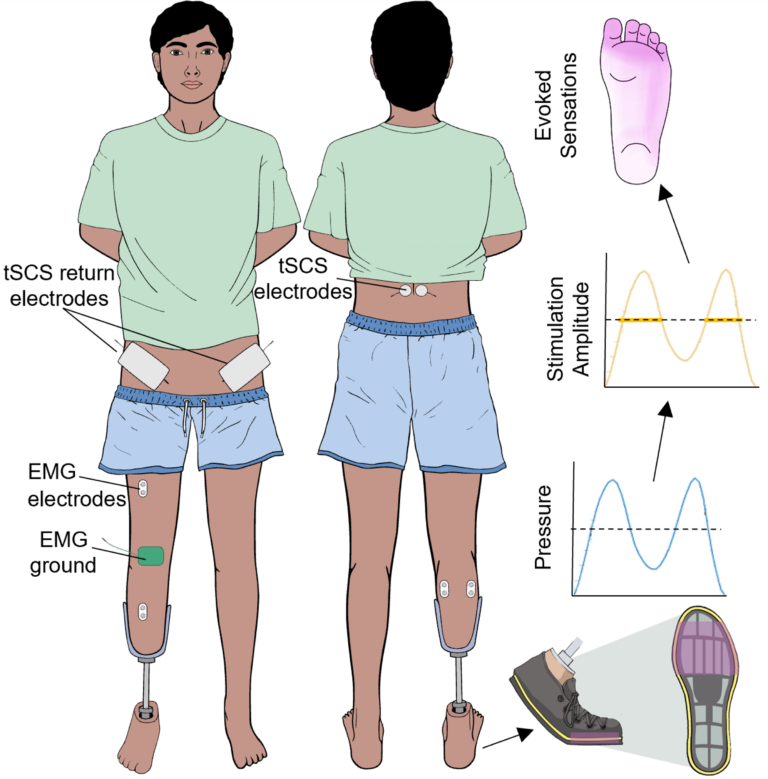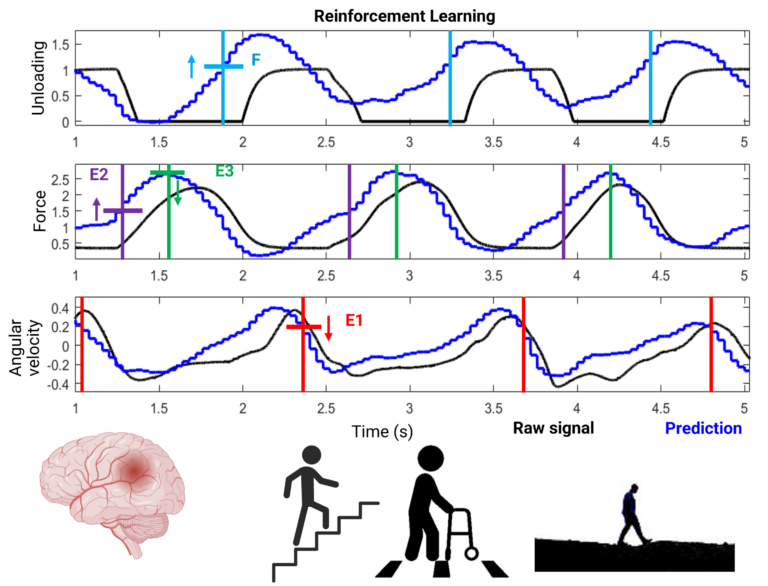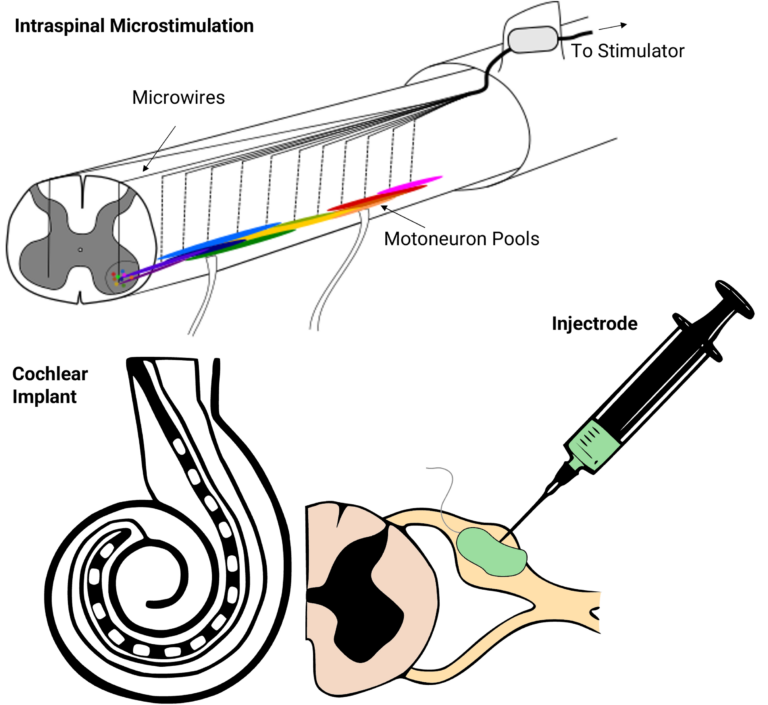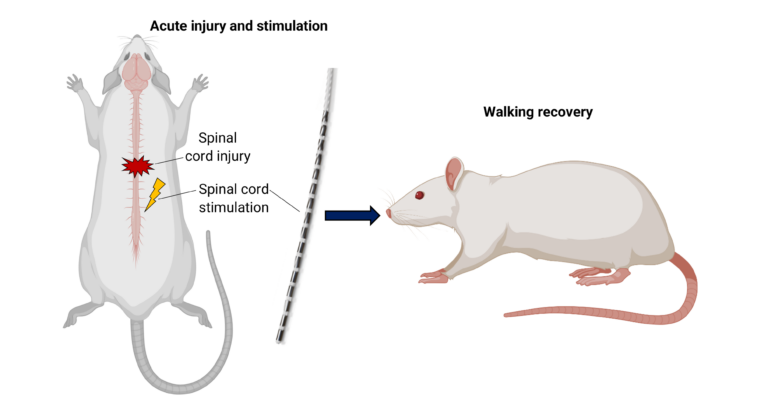
Research
We have a broad range of interests that ultimately aim to improve the lives of people with disabilities using neural interfaces and prostheses. We are also interested in the mechanisms of how neural interfaces influence the nervous system.

Transcutaneous spinal cord stimulation after lower-limb amputation
People with lower-limb amputations lose sensory feedback from their foot, contributing to a higher rate of falls. Furthermore, phantom limb pain affects more than 70% of people with limb amputations. Transcutaneous spinal cord stimulation (tSCS) is a non-invasive neuromodulation method that excites dorsal spinal roots and reflex pathways. We use tSCS to restore sensations in the missing foot of people with a transtibial amputation. We evoke sensations in the foot during walking to improve balance and gait stability. We also determine how tSCS can alter spinal networks and reduce phantom limb pain. (Image adapted from Dalrymple et al., 2023 and Nanivadekar, Bose, Petersen et al., 2023)

Automatic selection of parameters for spinal cord stimulation
Spinal cord stimulation (SCS) can improve motor recovery following complete and incomplete spinal cord injury (SCI). One limiting factor to the clinical translation of SCS for the recovery of walking is the requirement for manual selection of electrodes and programming of stimulation parameters. We use machine learning to search through the electrodes and stimulation parameters to determine the settings required for optimal activation of the leg muscles for the restoration of walking after SCI. (Figure adapted from Dalrymple et al., 2019, Walk Again Center)

Predictions of terrain changes following stroke
Navigating changing of terrain, such as transiting between even surfaces to curbs, stairs, and uneven surfaces, is challenging for people who have suffered a stroke. We aim to use reinforcement learning to predict signals from body-worn sensors (such as forces, joint angles, and muscle activity) to determine when these terrain transitions are about to happen. We plan to use these predictions as input signals for an exoskeleton to assist the person as needed while navigating these difficult terrain transitions. (Figure adapted from Dalrymple et al 2020, BioRender)

Preclinical testing of novel neural interfaces
Novel neural interfaces and materials must be tested in chronic in vivo models prior to translation to human implants. Through partnerships with companies and other research groups, we perform preclinical testing of devices and materials with the goal of translating the neurotechnologies to use in humans. We also use these devices and materials to investigate the mechanisms of different neuromodulation methods and how the body reacts to implanted neural interfaces. (Figure adapted from Dalrymple and Mushahwar, 2020, Shepherd et al., 2021)

Spinal cord stimulation following acute spinal cord injury
Spinal cord stimulation (SCS) has been shown to improve motor recovery following chronic spinal cord injury (SCI) in animal models and humans. What is unknown is if modulating the spinal cord following acute SCI could lead to improved motor recovery and a reduction in secondary complications, such as spasticity or neuropathic pain. We aim to determine the optimal timing of SCS after SCI in rodent models, which will inform on the therapeutic applications of SCS for humans. (Figure adapted from Biorender)
List of Collaborators
At the University of Utah:
Jake George, PhD
Kota Takahashi, PhD
Zack McCormick, MD
Aaron Conger, DO
Allison Glinka Przybysz, MD
Amy Lenz, PhD
Tommaso Lenzi, PhD
Greg Clark, PhD
Dave Warren, PhD
Heather Hayes, PhD
Peter Fino, PhD
Colby Hansen, MD
Mark Mahan, MD
Jessica Farrar, PhD
Mohammed Sbai, PhD
Vineet Panday, PhD
Outside of the U:
Lee Fisher, University of Pittsburgh
Patrick Pilarski, University of Alberta
Jonathan Schofield, University of California Davis
Taylor Burnham, University of Calgary